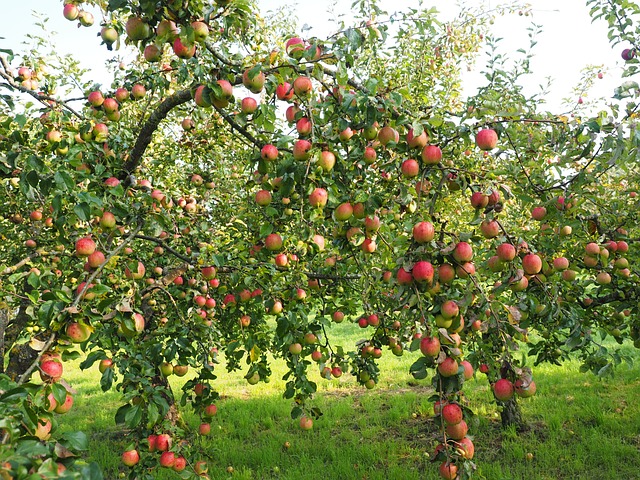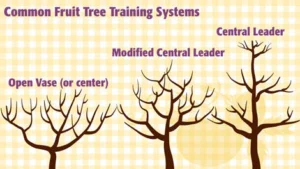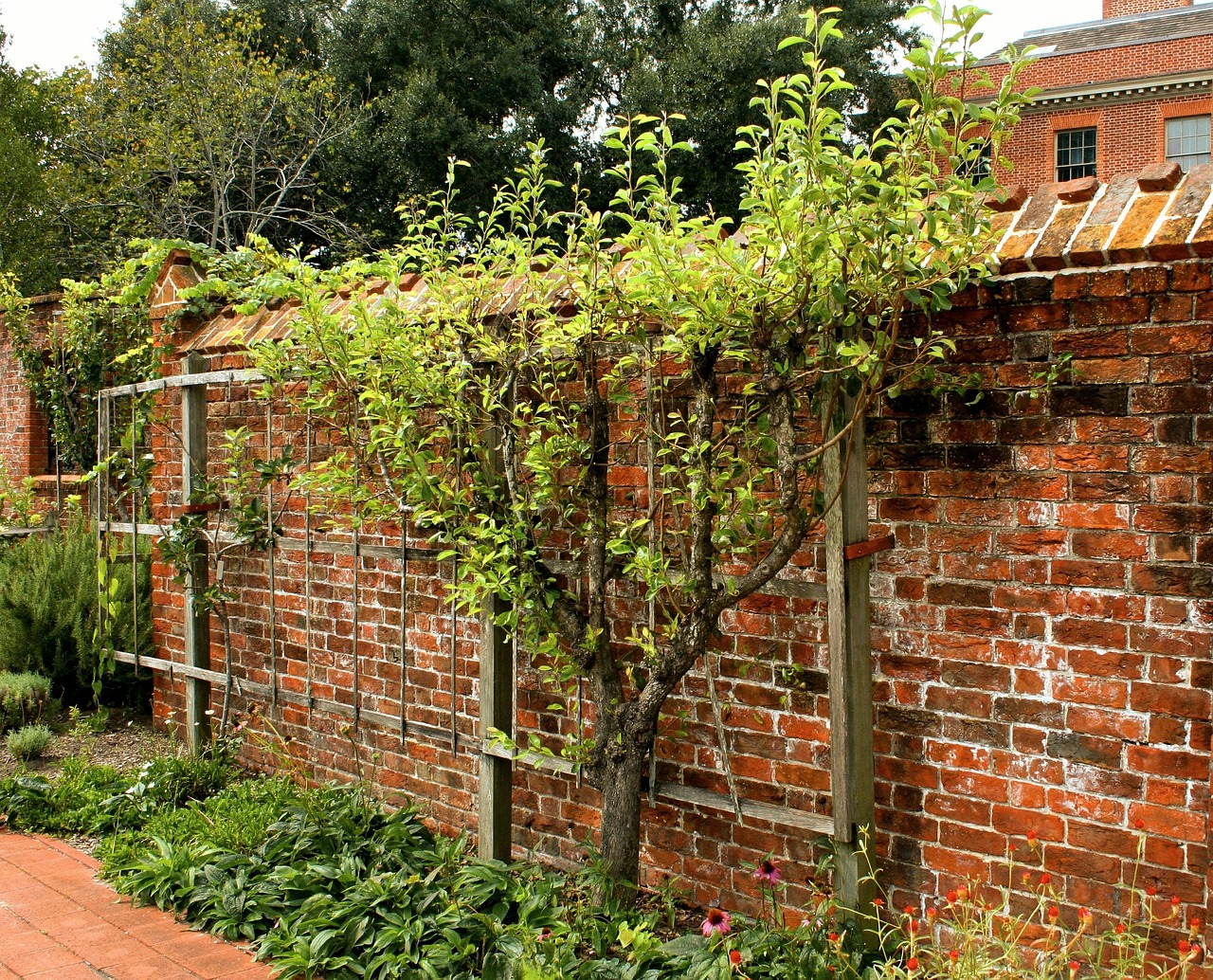HOW TO GROW FRUIT TREES FROM HOME
Fruit trees require considerable care to ensure they produce the best fruit possible. Taking good care of your fruit trees will help them stay healthy and productive for years to come.
Planting and maintaining healthy fruit trees requires a commitment of time, energy and resources. When selecting fruit trees, make sure they are suitable for the climate and soil conditions where you live.
Done right, they will enhance your landscape and provide enjoyment for years!

How To Grow Fruit Trees From Home – Planning
Site selection – Make sure your location will accomodate the mature tree size in full sunlight with good air circulation.
Soil – For best results (yield and quality of fruit), prepare a deep, well drained soil. Fruit trees like to establish deep roots. They do not like poorly drained soils. Avoid “wet feet” at all costs – develop a drainage system to achieve this if necessary.
Selecting nursery stock – The ideal starting tree sizes are about 3 to 6 feet in height, and about 3/4 inches in trunk diameter. This will ensure you can best establish and train the trees.
Planting time – In our northern Illinois zone, the best planting time is early spring (April), just after the soil thaws.
Note: During their life cycle, successful trees will require an annual spray schedule to prevent disease and insect damage.
Fruit Tree Care – Young Trees
Keep the area around the tree clear – Make sure the young trees do not have to compete with grasses and weeds for their nutrients. Keep at least 2 feet clear from around the trunk.
Mulch – Add a layer of mulch; 6 to 8 inches around the tree. Make sure the mulch is not piled up against the trunk. Remove the mulch about 2 inches from the trunk. The mulch will help with weed control, provide more moisture, and keep the soil temperature more even.
Prevent premature fruit bearing – Do not let the trees bear fruits during the first two growing seasons. This will encourage the young trees to develop a healthy branch network and strong structure. After the second second season, allow for a light bearing crop ensuring fruit weight is not allowed to damage any branches. Do not be impatient with young fruit trees!
Fertilizer – A general fertilizer such as 10-10-10 applied in early spring works best for most fruit trees.
Pest And Disease Management
Fruit tree pest and disease management is an important part of growing healthy fruit trees and keeping them productive.
The best way to manage pests and diseases is to be proactive and take preventive measures to reduce the risk of infection. This includes regular pruning, mulching, watering and fertilizing, as well as using pest-resistant varieties and resistant rootstocks.
Additionally, you should regularly inspect your fruit trees for signs of pests and diseases, and act quickly if any are found.
Appropriate treatments include the use of pesticides, biological controls and cultural controls. When it comes to disease management, it is important to properly identify the disease in order to choose the correct treatment. Some common diseases that affect fruit trees include apple scab, fire blight, powdery mildew, brown rot, black knot, canker, and more…
When considering how to grow fruit trees from home make use of online horticultural resources to help identify and manage problems.
Pruning
When to prune – Fruit trees are deciduous and generally most pruning should be done at the end of the dormant season – starting Feb 15 to end of March in our zone. Light pruning though, can be done at any time. Exceptions do apply. For example, growers often prune dwarf and semi-dwarf apple trees in summer which helps keep them to the desired height. It’s best to research your trees habits. The greatest mistake would be to do no fruit tree pruning.
Pruning guides
- Remove dead, broken, and diseased branches.
- Remove water sprouts (rapidly growing shoots from the the trunk or branches). Often, these grow as a result of severe pruning.
- Remove suckers that emerge from the roots.
- Remove branches growing inward, crossing and rubbing together. Keep the most desirable branch.
- Eliminate V branching – keep the most desirable branch.
- Remove branches or parts of branches that touch the ground. This will help with disease prevention.
- If possible, select main branches that grow in the direction with the wind rather than against the wind.
How to Grow Fruit Trees from Home – Pruning goals
- Get the best quality and fruit size.
- Develop a sturdy tree that can bear the load and produce for many years.
- Adjust the tree size to facilitate harvesting.
Central leader pruning – Allows the tree to have one strong central leader with well balanced lateral branches (ensure wide angle crotches at least 40 to 90 degrees). The first lateral branch should be about 18 to 24 inches above the soil.
Open center pruning – Allows for maximum sun light and air flow to the center of the tree, while also providing ample spacing to the primary and secondary scaffold branches. The first lateral scaffolds should be about 18 to 24 inches above the soil.


How to Grow Fruit Trees from Home – Espelier against a wall.
